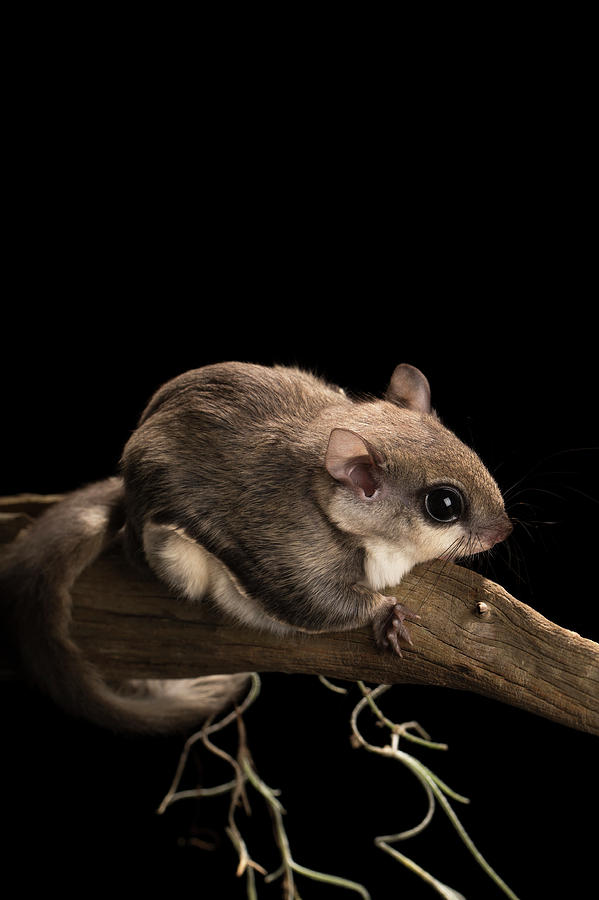
The limbs absorb the remainder of the impact, and the squirrels immediately run to the other side of the trunk or to the top of the tree to avoid any potential predators. Just before reaching a tree, they raise their flattened tails, which abruptly changes their trajectory upwards, and point all of their limbs forward to create a parachute effect with the membrane to reduce the shock of landing.

They maneuver with great efficiency in the air, making 90 degree turns around obstacles if needed. Once in the air, they form an "X" with their limbs, causing their membrane to stretch into a square-like shape and glide down at angles of 30 to 40 degrees. It is believed that they use triangulation to estimate the distance of the landing as they often lean out and pivot from side to side before jumping. From atop trees, flying squirrels can initiate glides from a running start or from a stationary position by bringing their limbs under the body, retracting their heads, and then propelling themselves off the tree. The adult northern flying squirrel measures from 25 to 37 cm long, and their weight can range from 110 to 230 grams.įlying squirrels do not actually fly, they glide using a patagium created by a fold of skin.

They can also be identified by their long whiskers, common to nocturnal mammals. These nocturnal, arboreal rodents have thick light brown or cinnamon fur on their upper body and greyish fur on the flanks and whitish fur underneath. On appeal, the delisting was reinstated in March 2013. Fish and Wildlife Service temporarily put the West Virginia northern flying squirrel back under protection on Jin response to a court order. fuscus, both of which are endangered, although the West Virginia subspecies has recovered enough that it was delisted in August 2008. coloratus, and the West Virginia northern flying squirrel G. Two subspecies are found in the southern Appalachians, the Carolina northern flying squirrel, G. It is generally smaller and darker than northern flying squirrel and occurs in British Columbia, northern California, Washington and Oregon. The Humboldt's flying squirrel was formerly considered conspecific, but was found to be a cryptic species, and now considered distinct. The northern flying squirrel is found in coniferous and mixed coniferous forests across the top of North America, from Alaska to Nova Scotia, south to the mountains of North Carolina and Tennessee and west to Utah.

Unlike most members of their family, flying squirrels are strictly nocturnal. Except when they have young, they change nests frequently, and in winter a number of individuals may huddle together in a shared nest. They mostly breed once a year in a cavity lined with lichen or other soft material. They feed on a variety of plant material as well as tree sap, fungi, insects, carrion, bird eggs and nestlings. They are proficient gliders but uncoordinated walkers on the ground. They are light brown with pale underparts and grow to a length of 25 to 37 cm (10 to 15 in). They are found in coniferous and mixed coniferous forests across much of Canada, from Alaska to Nova Scotia, and south to the mountains of North Carolina and west to Utah in the United States. The northern flying squirrel ( Glaucomys sabrinus) is one of three species of the genus Glaucomys, the only flying squirrels found in North America.


 0 kommentar(er)
0 kommentar(er)
